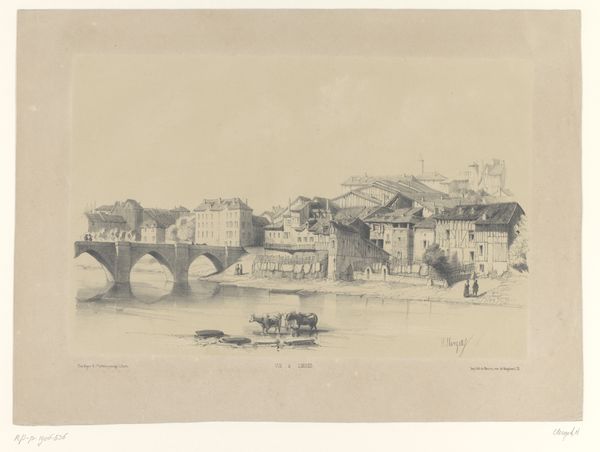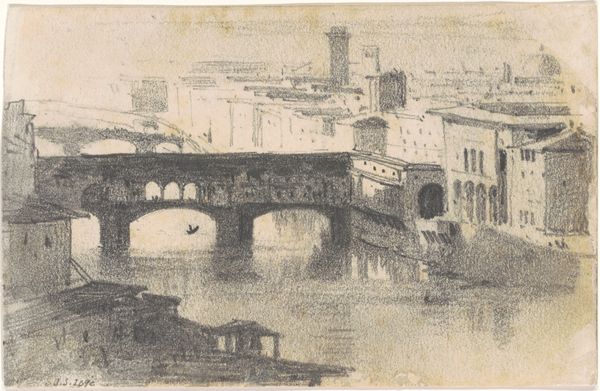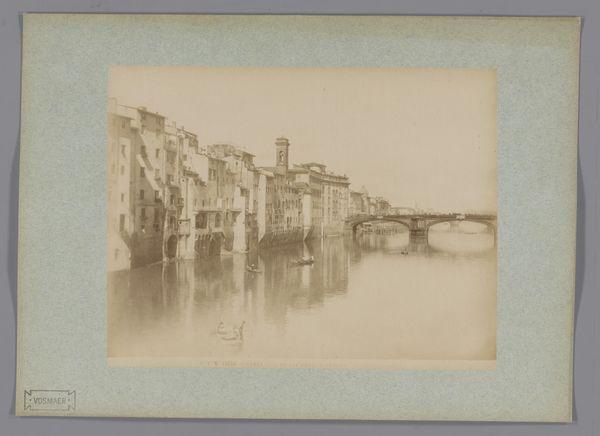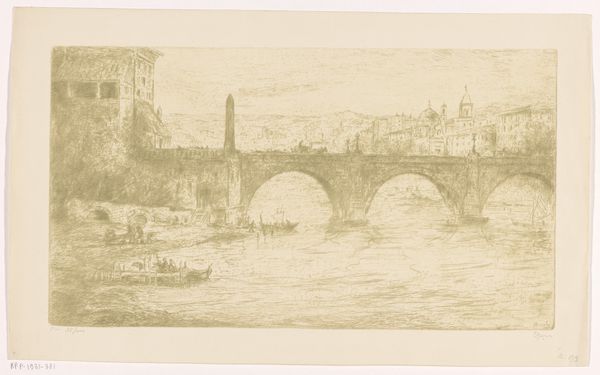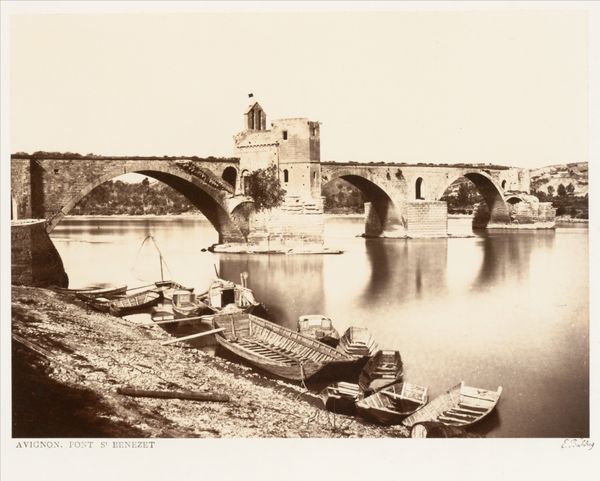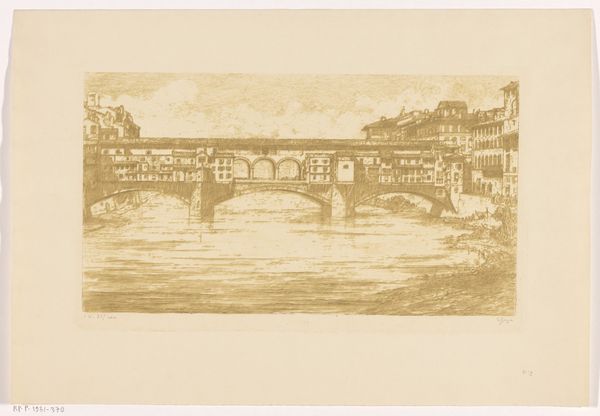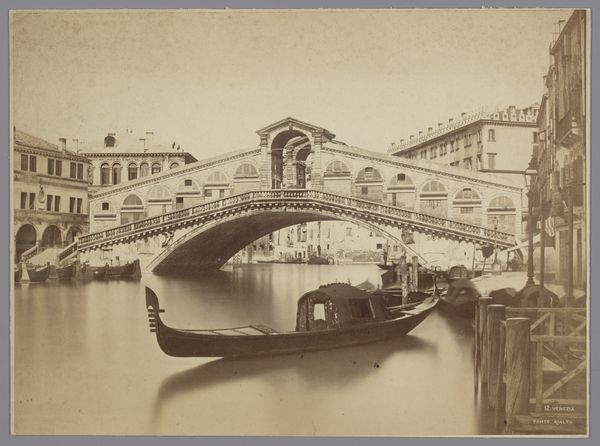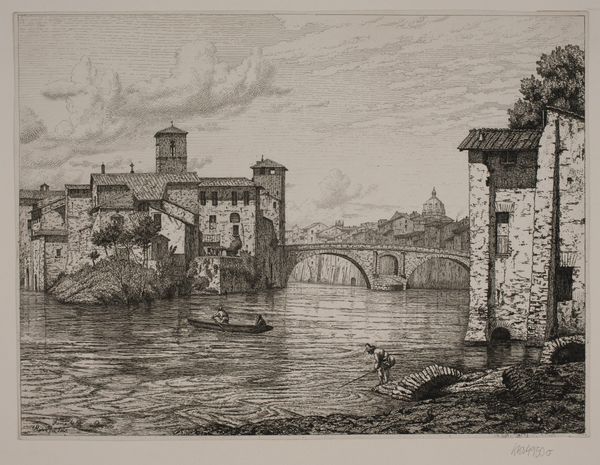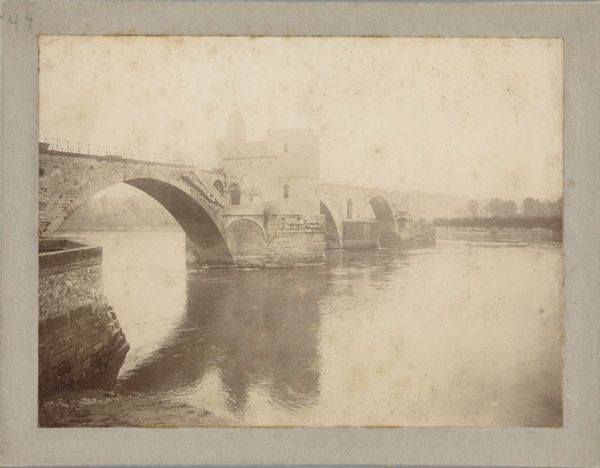
Ponte Rotto (Pons Aemilius), Rome (31. Rome. 1842. Ponte Rotto.) 1842
0:00
0:00
print, daguerreotype, photography
# print
#
landscape
#
daguerreotype
#
river
#
photography
#
ancient-mediterranean
#
cityscape
#
realism
#
building
Dimensions: Image: 3 11/16 × 9 1/2 in. (9.3 × 24.1 cm)
Copyright: Public Domain
Joseph-Philibert Girault de Prangey captured the Ponte Rotto in Rome using the daguerreotype process in 1842, freezing a moment of decay and endurance. The broken bridge, a symbol of disrupted connections, stands as a potent image of temporal flux. This ruin, the Pons Aemilius, speaks of ambition and collapse. We see the arch, once a proud emblem of Roman engineering. This reappears through time as a symbol of power, only to be humbled by the relentless forces of nature and history. Consider how arches in triumphal monuments celebrate military victories, their form echoing a sense of enduring strength, but this broken arch reflects a more profound, psychological narrative. It is a memento mori, reminding us of the transient nature of human endeavor. The image connects to our collective memory of loss and the inexorable passage of time, stirring deep emotions and subconscious reflections. The motif of the arch, broken yet standing, reveals a poignant cycle: aspiration, achievement, decline, and the haunting persistence of memory.
Comments
No comments
Be the first to comment and join the conversation on the ultimate creative platform.
